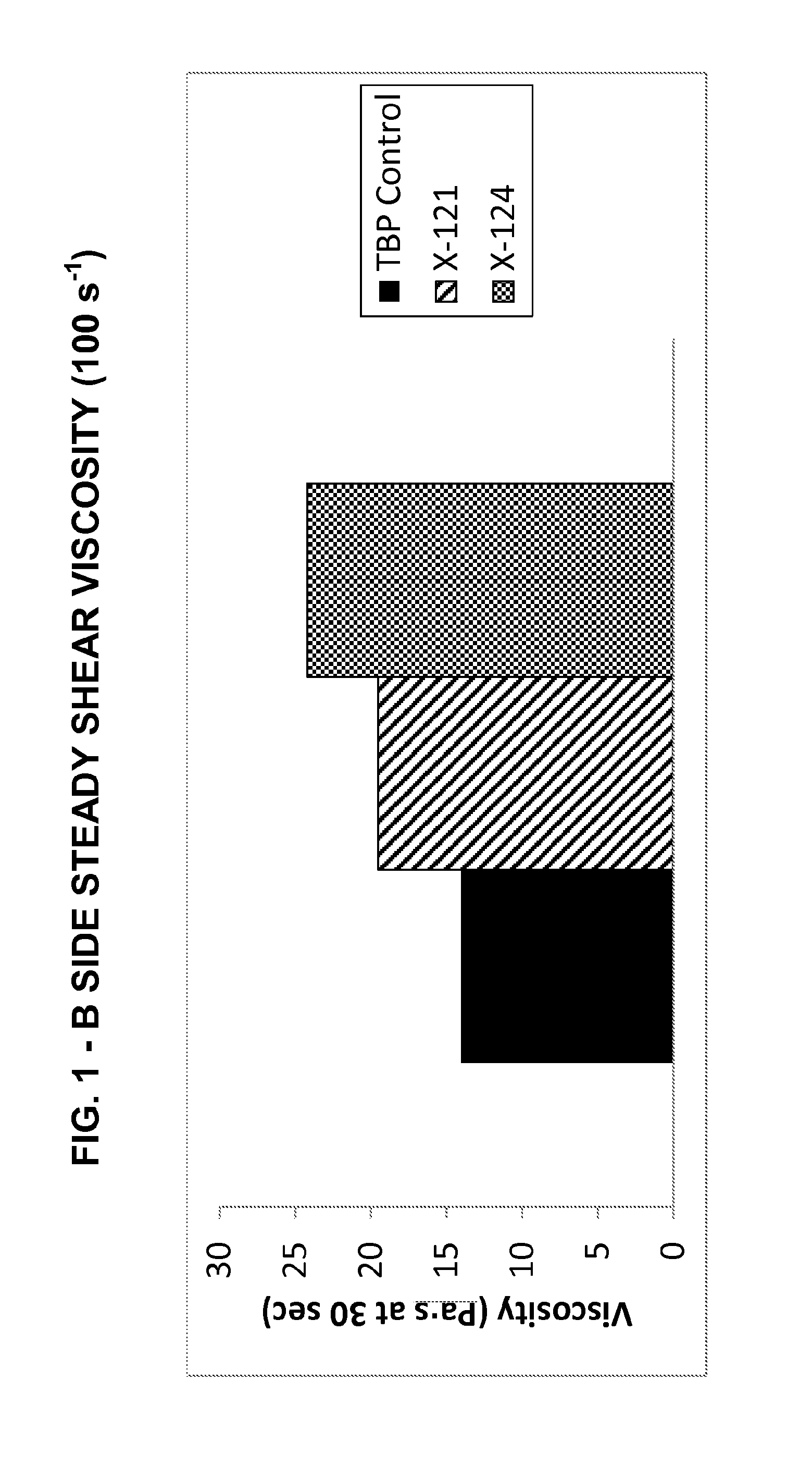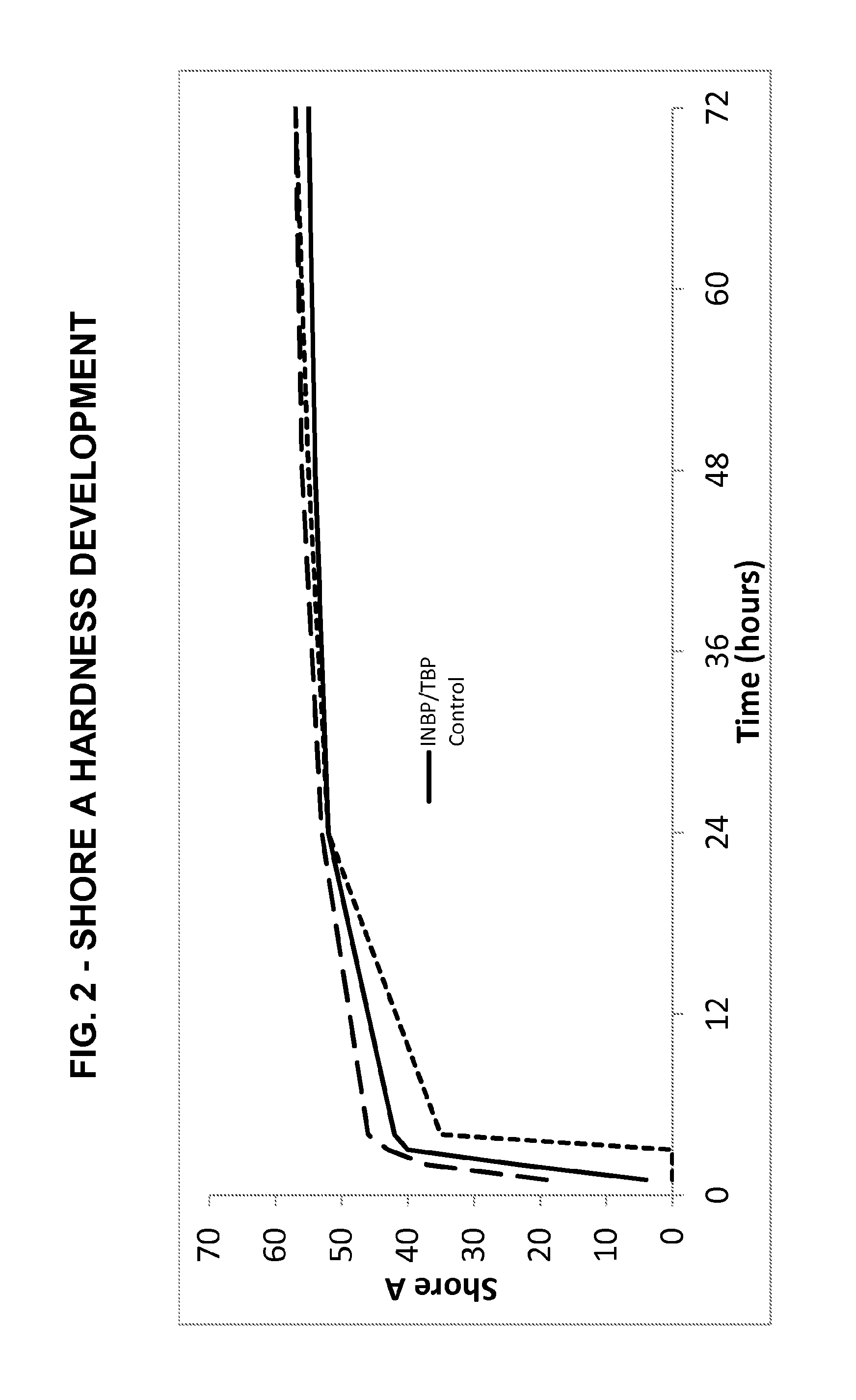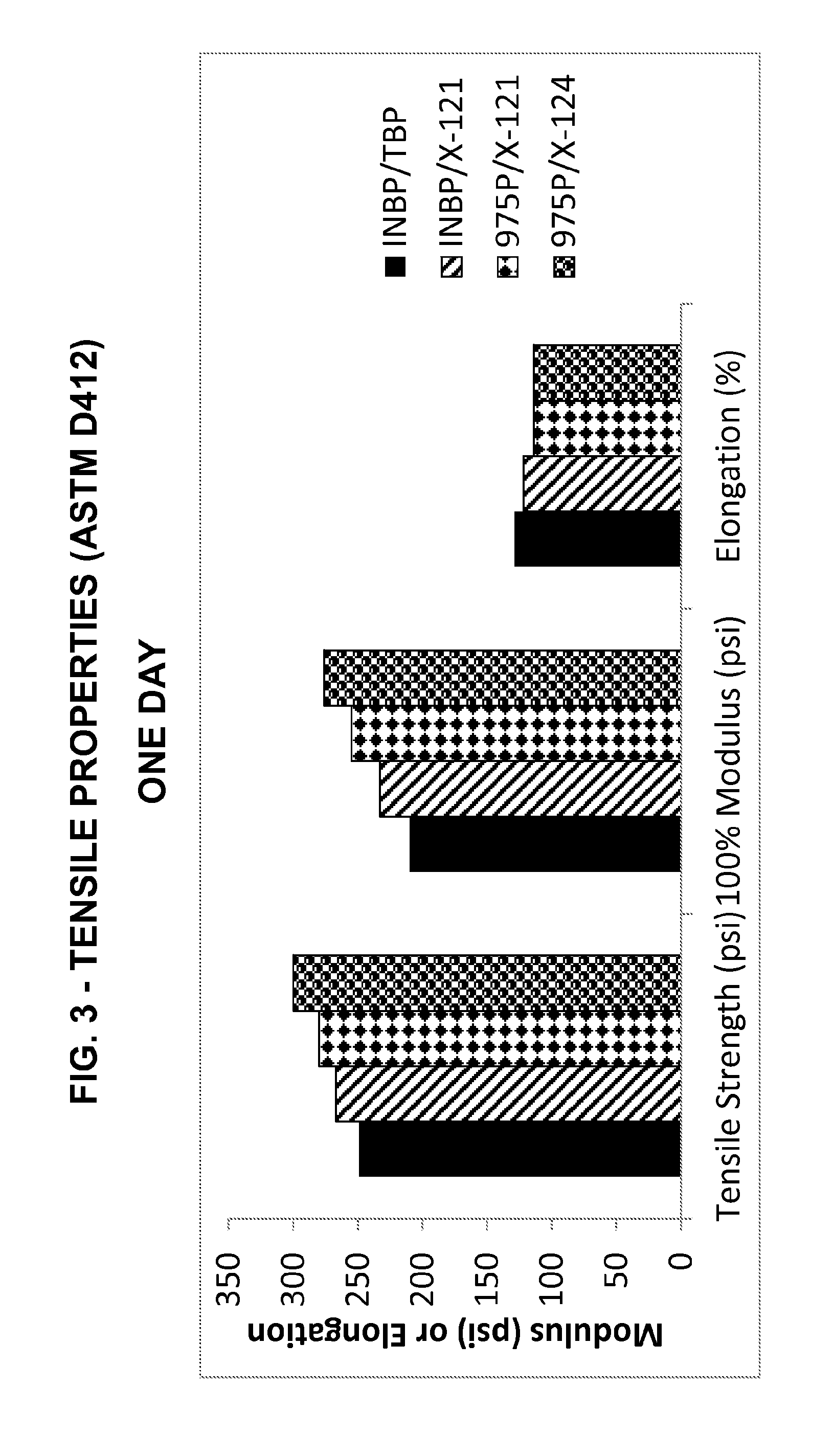Polyester plasticizers with benzoic acid end-caps
- Summary
- Abstract
- Description
- Claims
- Application Information
AI Technical Summary
Benefits of technology
Problems solved by technology
Method used
Image
Examples
example 1
2K Polysulfide Insulating Glass Sealant / B Side Evaluation
[0118]The formulation of the sealant and methodologies used in the example are set forth below:
[0119]A Side Formulation
Component TypePHRLiquid polysulfide polymer100INBP35Coupling agent1.2Ground calcium carbonate155Precipitated calcium carbonate32Stearic acid1.6
[0120]B Side Formulation
Component TypePartsPlasticizer155Curing agent101Carbon black33Accelerator6
TABLE 1MethodologiesA Side PreparationWeighed out polymer into mixing vessel, then with mixing added remaining liquid components, mixedon speed 1 with paddle mixer until liquids were well mixed (~2 min.) Added filler in portions, makingsure each portion was well blended before adding the next. Continued mixing for 20-25 minutes.Checked mixture on Hegman, continued mixing until the Hegman grind was 4 or higher.B Side PreparationBlended raw materials for 10 minutes at 200 RPM's using a dispersion blade. Ground the dispersedmixture on the three roll mill set at an adequate gap...
example 2
Propylene Glycol / Succinate Polyester with Dual Dibenzoate End Caps in Plastisol
[0132]Additional Methodology used for Plastisol Evaluations:
[0133]Viscosity and Rheology: Low shear—Brookfield RVT, 20 RPM's, 10 revolution reading. ASTM D1823. High shear—TA AR2000ex used. Parallel plates were set at appropriate gap. Shear to 1000 sec−1.
[0134]Gel / Fusion: TA AR2000ex in oscillatory mode. Parallel plates were set at appropriate gap. The test temperature was started at 40° C. and heated at a rate of 5° C / minute to 220° C.
[0135]Compatibility of the plasticizer with the polymer: Roll and Loop Tests, as above in Table 1.
[0136]Efficiency-Shore A—ASTM D2240; Tensile—ASTM D638, Type IV die, 50.8 cm / minute pull rate.
[0137]Raw Materials for Plastisol Evaluations:
[0138]Geon™ 121-A—PVC homopolymer available from PolyOne Corporation.
[0139]KRONOS TiO2—Titanium dioxide available from Kronos, Inc.
[0140]Mark® 1221—Ca / Zn stabilizer available from Galata Chemicals.
example 3
Propylene Glycol / Adipate Polyester with Dual Dibenzoate End Caps in Plastisol—Initial Screen.
[0149]The adipate-based inventive plasticizer (X-121) was compared to the high molecular weight, monomeric benzyl phthalate plasticizer TBP in the standard unfilled plastisol formulation shown above in Table 3.
[0150]Both plasticizers were utilized at 100 phr levels.
[0151]Methodologies utilized are the same as in Example 2 above.
[0152]Viscosity levels (mPa·s) obtained for the two plastisols (initial, one-day and three-day) are shown in FIG. 12 and reflect that the inventive plasticizer (X-121) surprisingly is stable in vinyl at a lower viscosity than the phthalate ester.
[0153]Initial, one-day shear and three-day shear results obtained for the unfilled plastisol samples are shown in FIGS. 13-15, respectively, and reflect very good, stable rheology characteristics for the inventive adipate-based oligomeric dibenzoate (X-121).
[0154]Surprisingly, despite being a higher molecular weight oligomeric...
PUM
| Property | Measurement | Unit |
|---|---|---|
| Temperature | aaaaa | aaaaa |
| Composition | aaaaa | aaaaa |
| Adhesivity | aaaaa | aaaaa |
Abstract
Description
Claims
Application Information
 Login to View More
Login to View More - R&D
- Intellectual Property
- Life Sciences
- Materials
- Tech Scout
- Unparalleled Data Quality
- Higher Quality Content
- 60% Fewer Hallucinations
Browse by: Latest US Patents, China's latest patents, Technical Efficacy Thesaurus, Application Domain, Technology Topic, Popular Technical Reports.
© 2025 PatSnap. All rights reserved.Legal|Privacy policy|Modern Slavery Act Transparency Statement|Sitemap|About US| Contact US: help@patsnap.com



